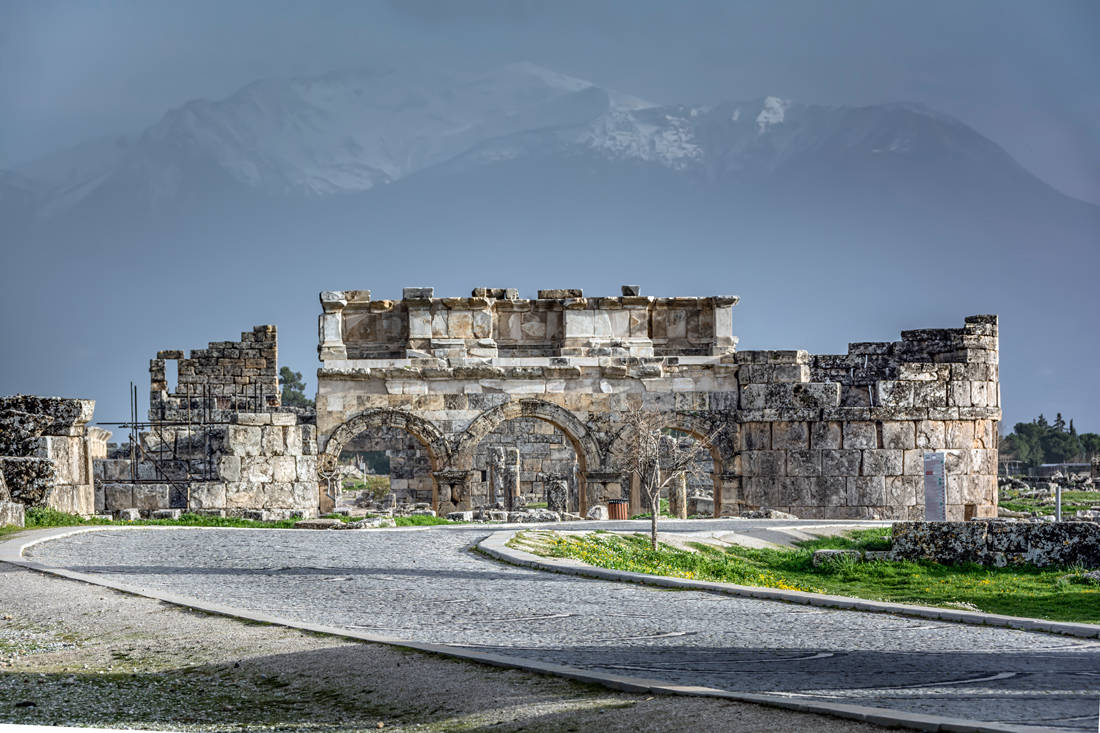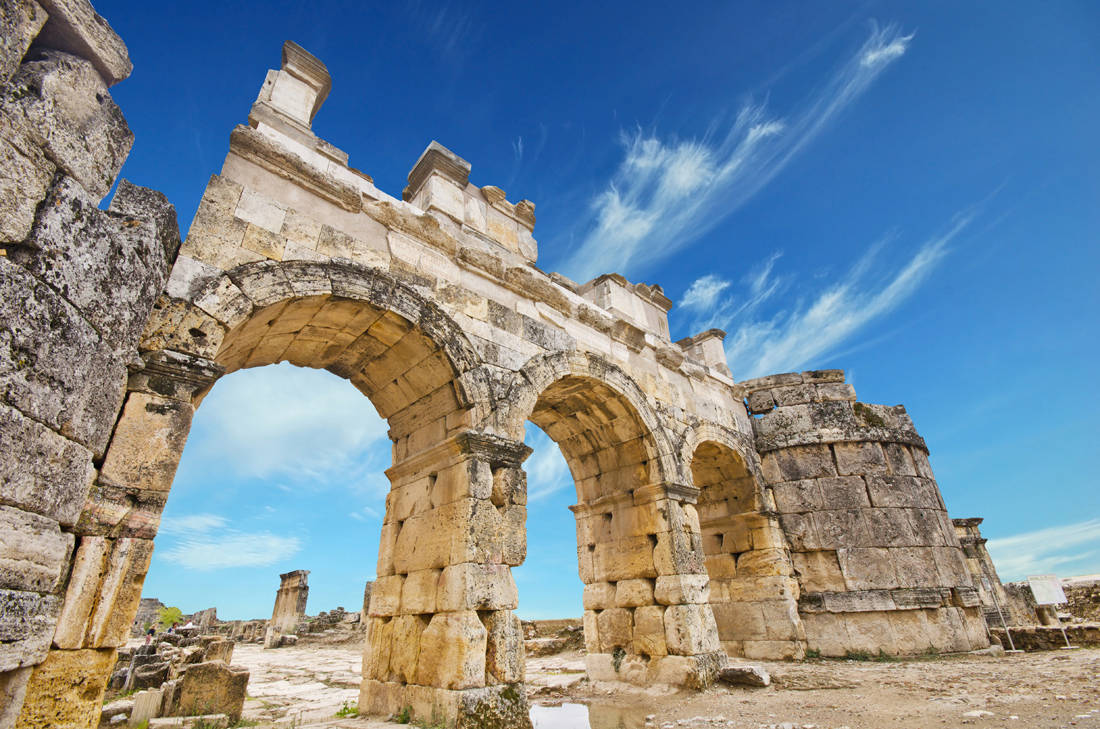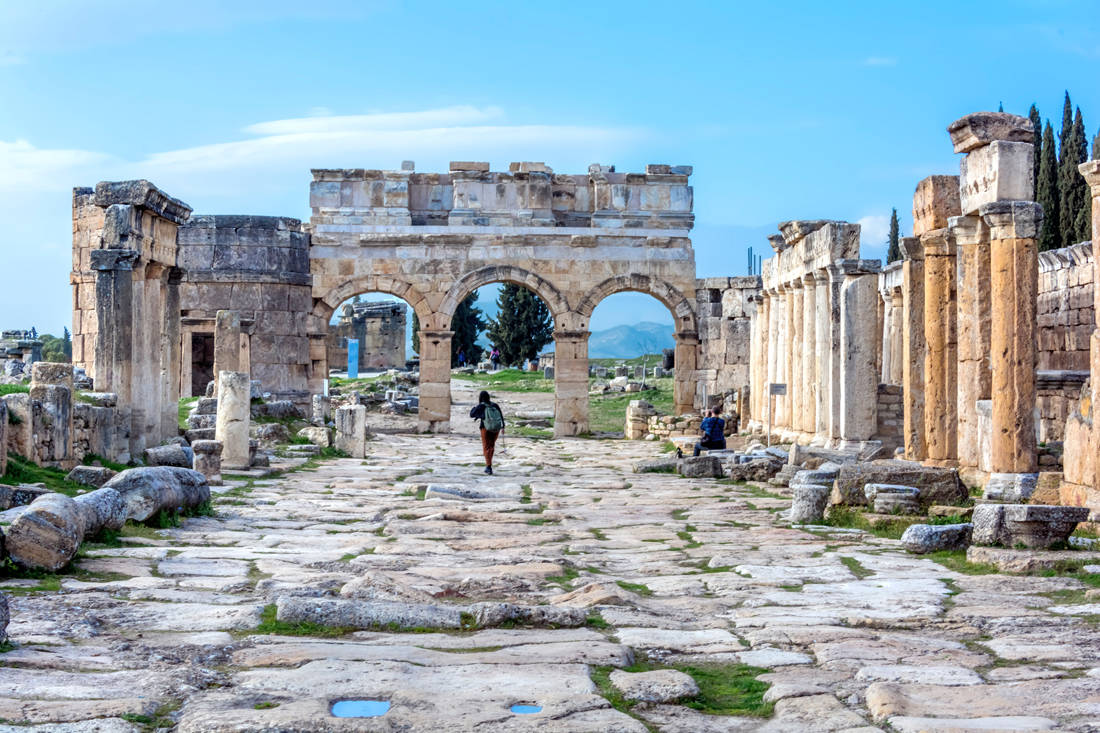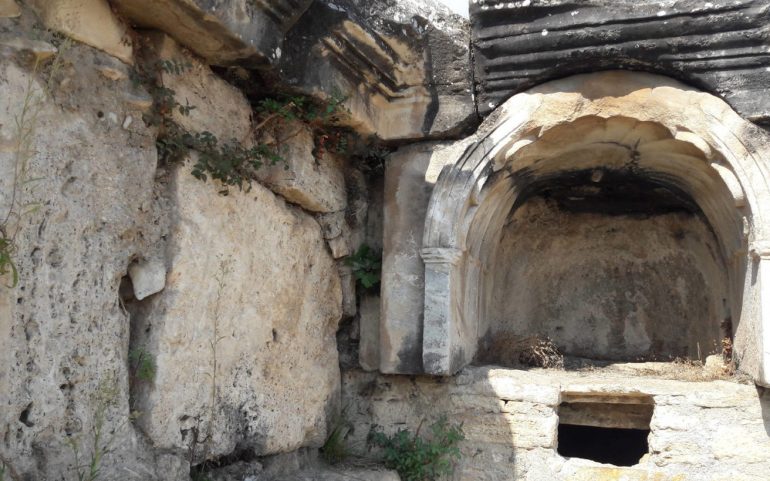Once a destination for people who wanted to see a different and scary ritual up close. A bull or other animal was led to the entrance of the cave, to the temple of Hades or Pluto, the god of the Underworld. The sounds of panicked animals came to the surface, followed by silence and then a noise, as the animal fell dead to the ground. The priests then threw ropes to retrieve the body, which died due to the breath of Pluto himself.
For centuries, priests claimed that these animals were killed by the power of the gods. Nobody knew what was really going on there, in Ancient city of Hierapolis and present-day Pamukkale, in southwestern Turkey. Until recently…
Hierapolis was a Roman city built on a plateau in Pamukkale, which means "cotton castle". The landscape here is special. Hot springs, full of calcium, create a limestone landscape which gives the area its name.
The city was created at the beginning of the 2nd century BC. People then paid special attention to the power of hot baths for the treatment of diseases and so Hierapolis began to flourish, soon attracting visitors from Greece and Rome for its baths. It was originally part of the kingdom of Pergamon, but passed into the possession of Rome when King Attalus III, with his death, appointed Rome heir to Pergamon.

As a Roman province in Asia, Hierapolis flourished, despite the many earthquakes that struck the region. In 60 AD, a theater was created in the city, which could accommodate up to 15.000 spectators. A large temple to the god Apollo was also erected, with marble stairs and large columns of Doric style.
But apart from the thermal baths and the imposing temple of Apollo, Hierapolis also had its dark side. Its expression was "Pluto", a place of worship of Pluto or Hades, the god of the Underworld, according to mythology. Jupiter ruled on earth, Poseidon at sea and Pluto in the underworld and was the one who decided who would live and who would die. Nowhere was his power as evident as in Hierapolis.
The Greek geographer, philosopher and historian Strabo visited the temple in the first century BC. and recorded its frightening properties. "It is a large opening capable of allowing a man to enter, but it reaches a considerable depth. This area is full of dense foggy smoke, which one can barely see the ground. "Every animal that enters finds instant death."
Until recently, it was believed that these images were a product of fantasy or some trick of the temple priests. Recent excavations, however, have shown that the deadly effects of the temple were real. In February 2018, archaeologists reported finding traces of gas coming from hot springs and finding that they led directly to the ruins of Pluto's temple.
Archaeologists have also found that the same volcanic activity in the area that creates the hot springs, causes the emergence of dangerous gases from the earth, mainly carbon dioxide. And while CO₂ is not usually toxic, in very high concentrations it can cause the body to lack oxygen. Normal levels of carbon dioxide in the atmosphere are about 0.039% and a rate of 10% is considered enough to cause death by suffocation in 30 minutes. The scientists who made the measurements in the area found that the CO₂ amounts to 53% in the air at the mouth of the cave and reaches 91% inside.

"We went there with a 90% certainty that we would find carbon dioxide under the temples," Hardy Pfanz, chief research professor, told History. "It was a great feeling to see that the gas we have been studying for more than a decade also affected humanity in antiquity."
Carbon dioxide is heavier than oxygen, so it accumulates near the ground, killing the animals that entered the cave, but without harming the people who lived outside. When the first inhabitants observed the animals dying on the spot, they must have come to the conclusion that the god of death was breathing through the earth or that it was the breath of his guardian, Cerberus.
In time, Hierapolis began to attract the tourists of antiquity, who wanted to see the macabre spectacle with their own eyes. Apart from the bulls that were sacrificed at the entrance of the cave, the eunuch priests of the temple gave their own "show", entering inside, although they understood the dangers. "They held their breath as much as they could," Strabo tells us. "I could see in their faces a form of suffocation."
In fact, the priests sold birds in cages to the visitors, in order to test the powers of the cave on their own. Its deadly power was a tourist attraction. And to this day it is a reality. When archaeologists discovered the site, they observed birds flying near the cave falling dead from the gas.

There are also some reports that the priests and perhaps the visitors had hallucinations and visions due to the initial gas poisoning.
The temple of Pluto in Hierapolis and the "gate to the underworld" did not survive long after the arrival of Christianity in the area. When the Christians arrived, the rituals stopped, the temple was vandalized and the memories of what was happening there passed in time into the realm of myth.
In the 6th century, the cave was permanently closed. New earthquakes in the area in the centuries that followed took over the rest and all that remained were the ruins of what was once a prosperous city at a time when the breath of the gods came out of the earth and people believed in a whole different world that existed below. from ours.
